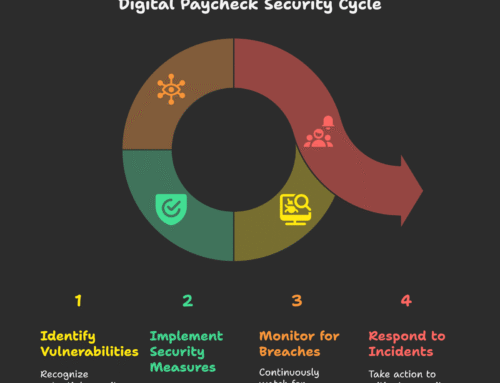As a human resources (HR) manager, you manage and support employees. It includes managing staff payroll and benefits, developing training programs, and promoting a safe working environment for everyone in the organization. On top of that, part of your responsibility also includes overseeing the whole recruitment process. This means publishing job descriptions and filtering candidates for vacant positions for interviews.
Indeed, it’s no secret that managing employees throughout their entire cycle with the company can be challenging. Hence, the need for an efficient workflow process. Moreover, streamlining daily tasks can increase efficiency and make your job and co-workers’ jobs easier, which goes a long way in boosting team member engagement. According to a study, highly engaged teams generate a 21% higher margin, indicating a company is likely to be more profitable and successful with an engaged and empowered team.
With these in mind, this article explores tips to help you streamline your daily HR workflow.

Image by rawpixel.com on Freepik
1. Evaluate Your Current Workflow
As a good start, it’s best to determine and eliminate bottlenecks in your current HR workflow. For instance, suppose you’re still manually screening candidates during recruitment. The onboarding process will likely experience delays and inconsistencies, especially if you encode, update, and track multiple applicant records. Besides improper documentation, manual procedures can also be time-consuming.
In addition, inconsistent insights could lead your team to make the wrong decision when hiring a candidate. This can be costly, as research shows that companies could lose around USD$15,000 on every bad hire.
Through workflow assessment, you can find opportunities to increase efficiency by removing complicated or unnecessary steps in your recruitment process. That way, you ensure you choose the most qualified applicants and reduce hiring costs.
2. Leverage Technology
After successfully evaluating your existing HR workflow, it’s time to find tools that can help you simplify HR activities. In this modern age, tech is HR’s best friend, allowing you to automate routine tasks like onboarding, payroll, and time tracking. You can also use it to organize your meetings and manage documents by sending emails or fax from computer. In addition, you may leverage tech to communicate with your in-house or remote team members.
For onboarding, you can use tools to help you pre-screen candidates. Some applications can automatically reject or shortlist candidates based on their answers or scores on pre-screening questionnaires. You can also utilize automation tools to help you schedule applicants for interviews. All these go a long way in speeding up the recruitment process.
Aside from that, you can use another tool, like a time-tracking solution. This technology allows you to easily monitor employees’ time and productivity, eliminating double-entry for payroll purposes. Traditionally, you’ll have to track employee hours with a timesheet, prone to human error and inconsistencies. Moreover, a survey suggests that 43% of hourly employees tend to commit time theft, wherein some team members could exploit clocking in and out manually.
By leveraging technology, you can reduce manual errors and maximize organizational productivity.
3. Prioritize Urgent Tasks
Even with automation, it’s essential to prioritize urgent tasks. This includes deadline-driven projects and last-minute preparations that could affect the business. For instance, suppose an employee accidentally puts customer data at risk due to leaks. This incident requires immediate attention from management as it can affect your organization regarding privacy compliance.
To help you determine and prioritize urgent tasks, it can help to create a to-do list. You can note various urgent and important HR activities for a given period, such as emergencies and crisis management, and list non-urgent tasks, like planning long-term employee policies or team-building activities.
After identifying these tasks, work from urgent to low-priority matters for the day, attending to critical issues before moving on to non-urgent tasks.
4. Create A Collaborative Environment
Part of streamlining your HR team’s workflow is delegating responsibilities to your team members. For instance, you can assign a staff member to assess your organization’s training needs when developing training programs. You can ask them to draft questionnaires for surveys. On the other hand, you can ask another employee to design training materials and modules and conduct or spearhead the seminar.
With task delegation, you can empower your employees and make them feel more engaged. Collaboration among colleagues can also be enhanced, resulting in a more efficient organization.
5. Schedule Daily Meetings With Your Staff
Communication is vital in the workplace since it helps cascade critical information, enhancing productivity and efficiency. Moreover, good communication minimizes turnover rates, with research revealing that effective communication boosts employee retention by 4.5 times.
With this in mind, scheduling regular meetings with your team is essential. Doing so can keep everyone updated with ongoing projects, helping you figure out barriers in your HR workflow. For instance, suppose you’re dealing with high volumes of applicants. You can hold meetings to discuss updates and brainstorm a strategy to streamline recruitment.
6. Ask Employees’ Feedback
Knowing what your employees think about the current workflow is vital in improving your processes. Considering your team members will be carrying out HR activities, their feedback is valuable to help you determine areas needing improvement.
For example, while using payroll software can help automate salary and wage management and track employee time off and deductions, it may not be as helpful if your team members are having difficulty using the software. By seeking their feedback through surveys or during meetings, you can be more aware of how these bottlenecks affect your staff’s productivity. You can adjust your strategies from there until you achieve the desired result.
Conclusion
Talent management is one of the primary duties of a company’s HR department. However, with so many tasks involved, managing employees’ needs and career growth can be challenging, increasing the need for a more efficient workflow process.
This post outlined tips to help you streamline your daily HR workflow. Implementing them can be a good start in improving your internal processes, such as onboarding, payroll, and time tracking, and boosting overall organizational productivity.






Leave A Comment